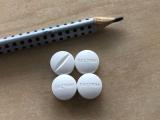A study today in the Annals of Internal Medicine hints that using antibiotics without medical supervision may be a common practice in the United States.
In a review of surveys conducted among various US populations over the past two decades, researchers from Baylor College of Medicine and elsewhere found that the prevalence of nonprescription antibiotic use ranged from 1% to 66%, and that storage of antibiotics for future use ranged from 14% to 48%. Antibiotics were most commonly obtained from prior prescriptions and family or friends with prescriptions, but also from neighborhood markets, the internet, and pet stores.
In one survey from 2018, nearly half of the respondents reported keeping leftover antibiotics from a prescription, and nearly three-quarters of those with leftovers said they had subsequently given them to their children's siblings or other children or adults. In a 2004 survey conducted among 101 neighborhood grocery store owners in New York City, 34 had antibiotics available for purchase.
Lead study author Larissa Grigoryan, MD, PhD, a researcher with Baylor College of Medicine and the Department of Veterans Affairs Center for Innovations in Quality, Effectiveness and Safety, said the results of the review suggest that nonprescription antibiotic use in the United States is an under-the-radar public health problem.
"Antibiotics are one of the very few drugs where inappropriate use in one patient can harm another patient; from a public health perspective, this can increase the level of antibiotic resistance," Grigoryan told CIDRAP News. "I don't think [people] realize the harm that comes from this type of unsafe antibiotic use."
Wide range of prevalence reported
The populations surveyed in the 31 studies included patients and parents of patients outside of healthcare settings (ie, people who were surveyed by phone), patients or parents of patients waiting for care in emergency departments or primary care clinics, Hispanic/Latino populations, and injection drug users.
People outside healthcare settings had the widest range of reported nonprescription antibiotic use, from 3% to 48%, while 1% to 25% of patients within healthcare settings reported nonprescription use. The range of nonprescription use among injection drug users, who reported using antibiotic for abscesses or injection-related wounds, was 5% to 32%.
Among the surveys that looked at patients within healthcare settings was a survey conducted by Grigoryan and other researchers at Baylor College of Medicine in 2015 among 400 patients in the waiting rooms of Houston-area primary clinics. In that survey, 5% reported previous nonprescription antibiotic use, and 25% said they would be willing to use antibiotics without contacting a health professional in the future.
Grigoryan, who had previously studied nonprescription antibiotic use in Europe, said it was that survey that made her want to further explore the prevalence of the practice in America. But she had a sense that those results might be an indication of what they would find in their review.
"I know that there are people who use leftover antibiotics, and there are certain stores in Houston where they sell antibiotics without a prescription, so I wasn't surprised by the findings," she said.
The surveys that examined nonprescription antibiotic use among Hispanic/Latino immigrants found that anywhere from 19% to 66% of respondents had used antibiotics without consulting a medical professional. These surveys were also the only ones that provided some insight on factors that contribute to the practice. Among the factors cited were easy access; people reported getting antibiotics from relatives or friends who had purchased them in other countries and buying them under-the-counter at neighborhood markets.
Lack of health insurance, concerns about legal status and fear of deportation, and long waiting periods at clinics were other reasons cited. One survey on immigrants in South Carolina found that some respondents believed visiting a doctor was unnecessary if their symptoms had previously responded to antibiotic treatment.
Grigoryan said Hispanic/Latino immigrants may have been a particular focus of research because of their ties to countries where purchasing antibiotics without a prescription is more common, and because of an assumption of limited healthcare access. But she noted that it's hard to make comparisons with other racial ethnic groups in the United States, or with the general population, since there haven't been any nationwide studies of nonprescription antibiotic use.
Grigoryan and her colleagues say their scoping review really just scratches the surface, since few studies have been conducted, and most of them use different methodologies. They conclude that the overall prevalence of non-prescription antibiotic use in the United States needs to quantified, and that influencing factors—including access to care, costs, and beliefs—need to be to studied further to fill out the full picture.
"This question is very understudied, and until we understand which factors are driving the unsafe use of antibiotics, we can't really design any effective interventions," Grigoryan said.
See also:
Jul 22 Ann Intern Med review
Nov 5, 2018, CIDRAP News story "Survey finds parents commonly save, share leftover antibiotics"
Jul 12, 2016, CIDRAP News story "US survey: Many willing to skip doctor to get antibiotics"

























